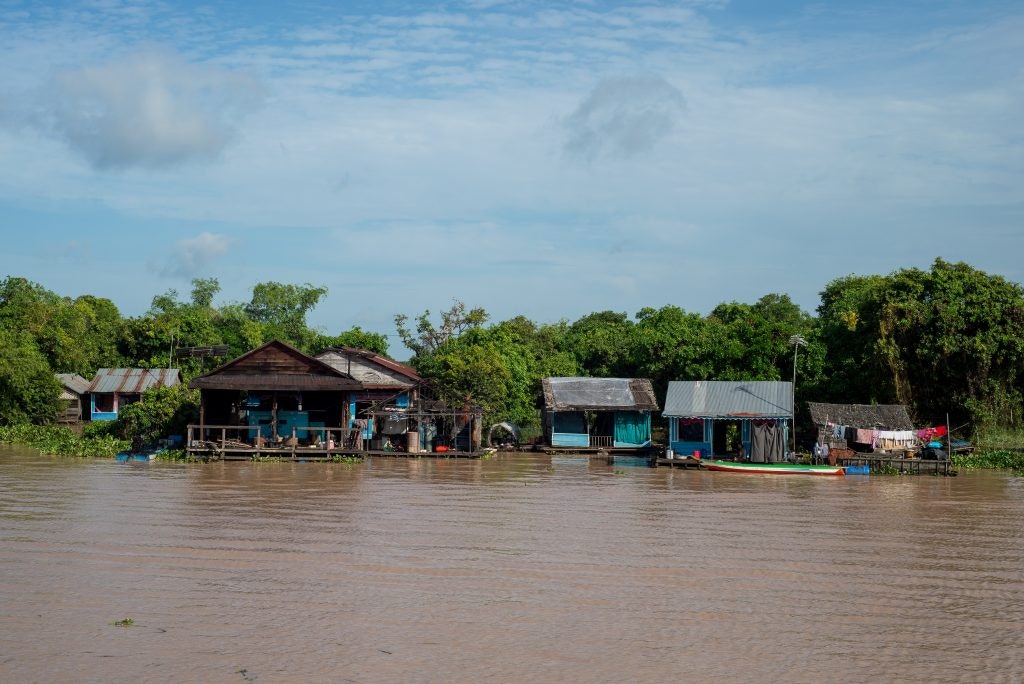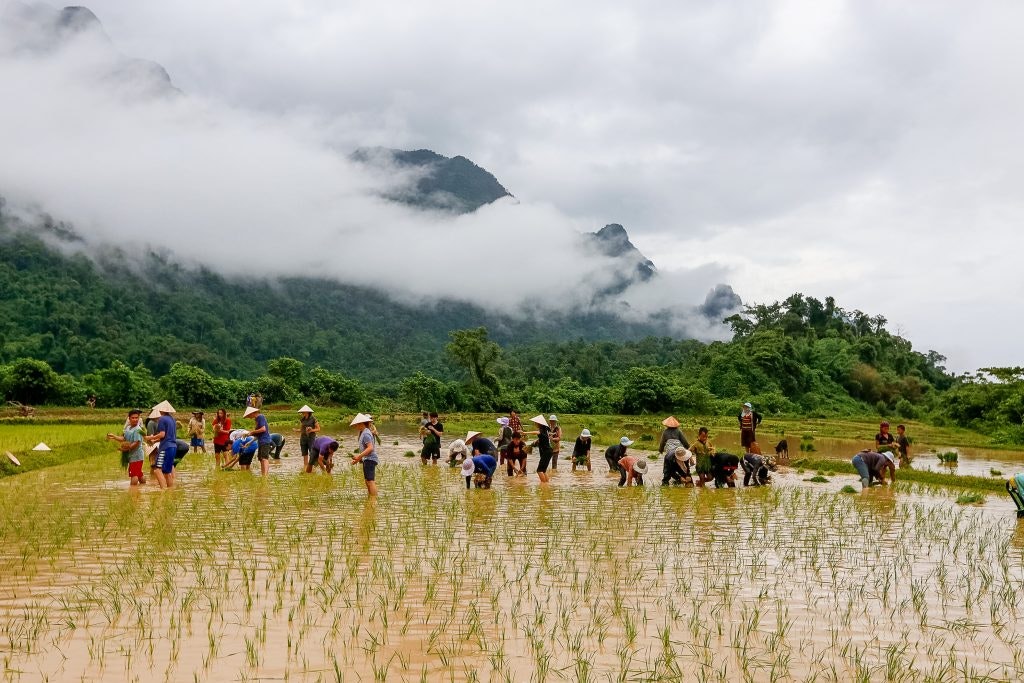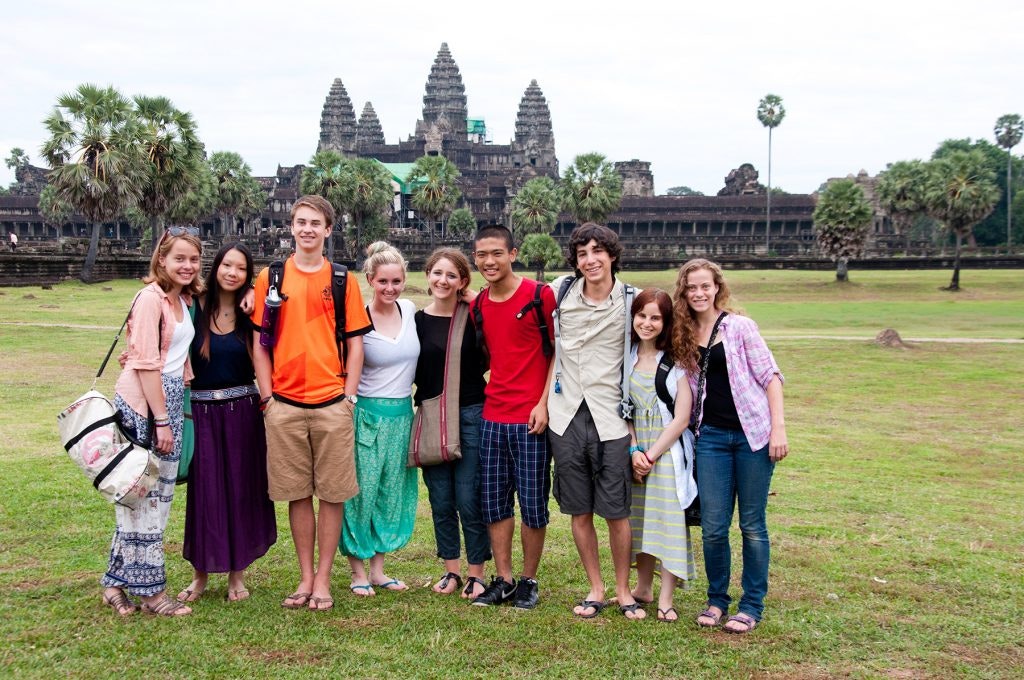The Mekong River: Vital Lifeline in Southeast Asia
The Mekong River, the longest river in Southeast Asia, is crucial for millions of people in the region. However, it faces severe threats from climate change and human activities, especially the construction of upstream dams. The Mekong Basin, divided into the upper and lower basins, supports a diverse ecosystem and numerous communities. Deforestation, poor land-use planning, and economic policies have led to significant environmental degradation, making it difficult for the region to cope with climate change.
A way of life for millions of people in Asia is under threat from climate change and human activities, particularly the building of upstream dams. More than two-thirds of the forest cover in the Mekong region has already been lost due to population growth, poor land-use planning, and ineffective economic policies.
Losing forests and biodiversity makes it harder for the region to handle climate change and puts local communities at risk. Farming activities have expanded, causing more damage to the environment. In Cambodia and Laos, more land is being used for agriculture, shifting cultivation locations and putting more pressure on natural ecosystems and the rural communities that rely on them in the lower Mekong basin.
Areas that were once remote are now ceding land to productive inland fisheries. Human population growth and the demand for energy and natural resources are increasing.

Rustic students have completed many service projects in the floating village of Prek Toal, Cambodia. Photo: Rustic Pathways
About The Largest River In the South-East of Asia
The Mekong River is the third longest river in Asia behind the Yangtze River and the Yellow River. It is the longest river in Southeast Asia and the major river of Vietnam and Laos. The Mekong Basin is split into two parts: the “upper basin” in Tibet, Yunnan, and eastern Myanmar, and the “lower Mekong basin” from Yunnan to the ocean.
The river flows through the lower basin, passing Northern Thailand and Northern Laos. Then the Mekong enters Cambodia with a sudden plunge at Khone Falls before the Mekong flows into the South China Sea in Vietnam through its delta system. The borders of Thailand, Laos, China and Myanmar meet in the area known as the Golden Triangle.
Impact of Dams on the Mekong Ecosystem
China operates 12 large dams on the upstream portions of the Mekong River, generating 22,710 megawatts of electricity. Eleven more dams are slated for the lower Mekong mainstream in Laos and Cambodia. China is building a cascade of fourteen dams on the Upper Mekong in Yunnan Province, which will have devastating impacts on downstream communities.
Laos seeks to be “the battery of Southeast Asia”, and hopes to develop more than sixty dams on Mekong tributaries. The nation is even considering nine projects on the mainstream. These dams would severely impact the river’s rich fisheries and the people who depend on them.
Water Management Challenges in Southeast Asia
Forest cover in the Greater Mekong has fallen from over 55% in the early 1970s to 34% today. Poor land-use planning and economic policies have led to deforestation and biodiversity loss. The construction of the Three Gorges Dam and other dams in the upper basin has altered water flow and increased riverbed degradation.
This impacts the river basin, including areas like the East China Sea and the South China Sea. As the Mekong rises and falls, these changes affect the entire ecosystem. Most people living along the Mekong River work in agriculture, with rice cultivation being the main form of work. The highest population densities are in the Mekong Delta and on the Khorat Plateau.
Challenges Faced by Floating Villages
Rustic Pathways’ Country Manager for Cambodia and Vietnam says the effects are being felt in places like the floating villages where students have visited in the past.
“These villages face a lot of challenges because of water level changes on the Mekong River,” Pannha En said.
The floating villages in Cambodia rely on Tonle Sap Lake, which the Mekong River feeds. Waterflow changes have reduced fish stocks.
In the past, the lake had one of the most productive fisheries in the world. Normally, about a half a million tons of fish were drawn from it each year, which is more than could be fished from all of North America’s lakes combined.

Rice fields across Southeast Asia need a rich supply of water to thrive. Copyright: © 2015 Rustic Pathways
Efforts to Rejuvenate Fish Populations
The number of fish has declined as water conditions have changed. Pannha says the local villagers have responded by banning certain forms of fishing, including the use of electric shock or nets with small holes that may catch eggs or other important byproducts.
In March, scientists released 1,500 juvenile fish that were reared in captivity into protected zones of the lake. Mandated “no-take zones” allow the fish to mature before they go on spawning migrations. The hope is this effort will help rejuvenate the fish population. These are small steps in an ever-growing problem.
Economic Impact of Damming Rivers
The changes to the Mekong River significantly impact the economies of the countries in the region. Agriculture, particularly rice farming, is a major economic activity, and the river’s altered flow affects irrigation and crop yields.
The fishing industry, vital for local livelihoods, suffers due to reduced fish stocks. Hydroelectric dams, while providing energy, disrupt natural resources and agricultural patterns. These economic shifts strain rural communities dependent on the river and push migration to urban areas, increasing urban economic pressures.
Environmental Impact Beyond Fisheries
The environmental impact of the Mekong River’s degradation extends beyond fisheries. The loss of forests affects soil quality, leading to increased erosion and reduced agricultural productivity. Vegetation loss disrupts habitats for numerous wildlife species, further reducing biodiversity.
Water quality is also impacted by increased salinity and sediment disruption, harming not only aquatic life but also the health of human populations relying on the river for drinking water and agriculture. The altered river flow patterns lead to unpredictable flooding and drought cycles, exacerbating the vulnerability of communities in the region.

Tourism is an important industry in Cambodia. Photo: Rustic Pathways
International Cooperation and Future Solutions
In the 1990s, four countries formed the Mekong River Commission to promote cooperation. One main problem is that China is not part of this commission. In 2020, China agreed to provide year-round hydrological data that would help the other countries forecast both droughts and floods.
Last fall, the countries in the region also agreed to study the impact of climate change and the dams on the river. This will help answer questions about the role of dams in the region. The effort is becoming increasingly urgent, according to another study in 2021. The research by a Dutch consulting firm called the year 2050 the “tipping point” – the year at which factors like salinity won’t be controllable if changes don’t occur.
The Role of Tourism and Local Initiatives
The hope is that international cooperation will help ease the problem. In the meantime, Pannha says countries like Cambodia and Vietnam are turning to other industries to keep their economy alive. Tourism is an important industry in Cambodia. Until improvements in these industries can be made, only time will tell how the mighty Mekong will fare over the next several years.
Related: Traveling to Cambodia FAQs
One key plan is to promote tourism that’ll help locals keep food on the table. Photo: Rustic Pathways
A number of conservationists remain hopeful. They note that the Mekong is injured but not destroyed. For them, their hopes partially lie in the younger generation. With the added education about conservation, younger leaders can step up to find answers.
And that may be what it takes to restore this international treasure. Rustic Pathways students are doing their part to help in Southeast Asia. Over the years, students participating in programs centered in Cambodia and Laos have provided assistance to local communities near the river.
Each summer the programs in Vietnam and Thailand, such as the Marine and Rainforest Conservation program, are helping the region at large and providing an education about responsible practices. This promotion of a healthier environment goes a long way towards keeping waterways clean and enabling local communities to thrive.
Conclusion
The Mekong River is in critical condition due to upstream dam construction, deforestation, and poor land management. These issues impact local communities and biodiversity, making it urgent to find solutions. International cooperation, sustainable practices and conservation efforts are essential to protect this vital river and ensure the livelihoods of millions.
With the combined efforts of governments, local communities and conservationists, there is hope for restoring the health of the Mekong River and securing a sustainable future for the region. For more information on global environmental efforts that are making an impact, please view our conservation programs.
